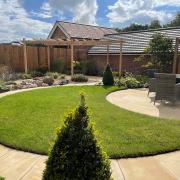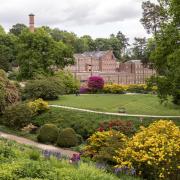The gardens for all seasons at Ness have wonders at every turn
Ness Botanic Gardens are one of my favourite places to visit in early spring. Overlooking the Dee Estuary, and occupying 64 acres on the Wirral Peninsula, they are a short drive down the M56 from my home near Altrincham. The gardens were founded in 1898 by Liverpool cotton merchant Arthur Kilpin Bulley who had a passion for plant collecting and gardens.

In 1948, a few years after he died, the gardens were donated to the University of Liverpool by his daughter Lois Bulley, with one of the conditions of the gift specifying the gardens must remain open for the enjoyment of the public. They have indeed been captivating visitors ever since, but while the gardens continue to evolve, there is also a significant emphasis on research, conservation and education, reflecting the interests of the founder.
There is always something of interest to see at Ness: from the magnificent panorama over the herbaceous borders, with a distant glimpse of the spectacular magnolias in May, to the colourful Mediterranean garden in summer. But it’s the line of trees as you emerge from the Visitor Centre that always first captures my attention. On the day I visited, their skeletal forms displayed a simple beauty that is hidden when they are in full leaf, and beyond them is the stunning view over the estuary.
The highlight of the garden for me in late winter is always the snowdrops, and whether you are a serious galanthophile or not, the carpets of white with their little nodding heads, are a glorious sight and a perfect prelude to the start of spring.

Towards the end of the month and into March, they are joined by numerous other late winter bulbs and early primroses. Strolling around the rock garden, you will come across a lawn that is covered with naturalised dwarf narcissi. Little gems such as the pale Scilla mischtschenkoana and the deeper blue of Scilla siberica gather in little clumps beside the pathways, and if you look up from your explorations, the sunshine yellow of Acacia dealbata, otherwise known as Mimosa, forms a perfect contrast to the blue winter sky. Of course, February is not always about blue sky days, but there is so much to delight, that even the winter chill cannot spoil an excellent day out.
As a regular visitor, I still like to take a journey around the whole garden rather than head for the areas where I know the seasonal interest can be found. There are always surprises, and the informal layout invites the visitor to explore the various pathways.
As well as the rock garden and nearby woodland, where the majority of the snowdrops are to be found, it’s always worth heading to the other woodland area adjacent to the pinewood and rhododendron border.
Here, winter shrubs such as camellia, hamamelis and the sweetly scented Corylopsis spicata delight with their colour and fragrance. Camellia x williamsii ‘Anticipation’, which flowers in February and March, is one of my favourites and has double peony-like blooms in a gorgeous deep pink.

Ness is also home to many autumn-flowering sasanqua varieties and with a succession of colourful blooms like these all through the winter months, Ness is truly a garden for all seasons.
Ness Botanic Gardens is open throughout the year and full details can be found on its website. Membership packages, which make a great gift for a garden lover, offer not only free entry to Ness but also to the botanical gardens at Oxford, Bristol, Birmingham and Edinburgh.
Alison Moore is a garden designer and photographer based in Sale. She writes a blog about her own garden and others she visits in Cheshire.
renaissance-gardendesign.co.uk
Twitter: @renaissancegd
Instagram: @alisonmoore



























